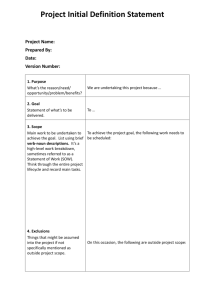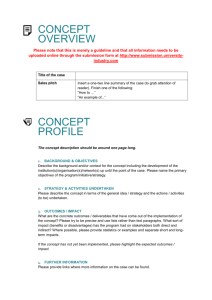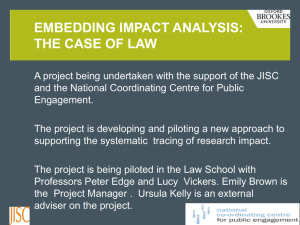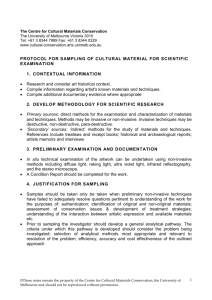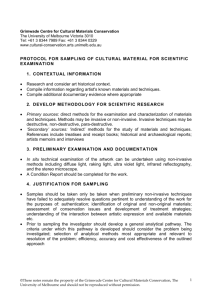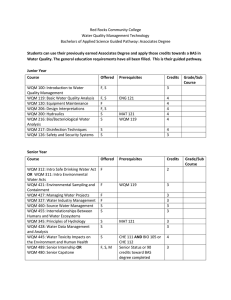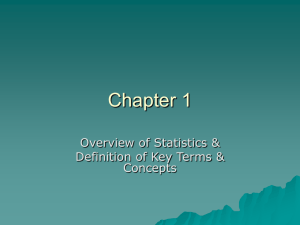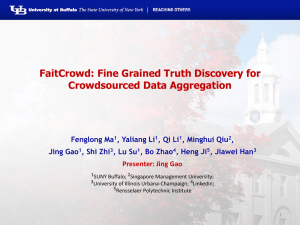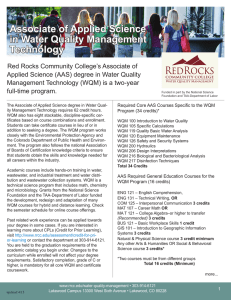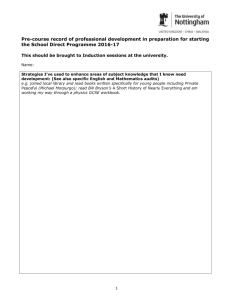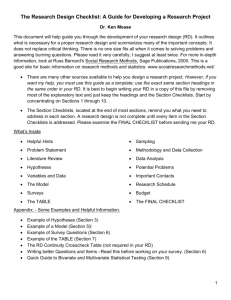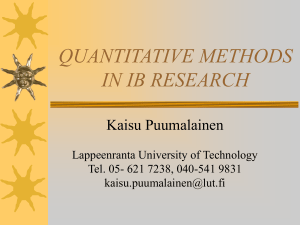Example format for a technical report on WQM
advertisement
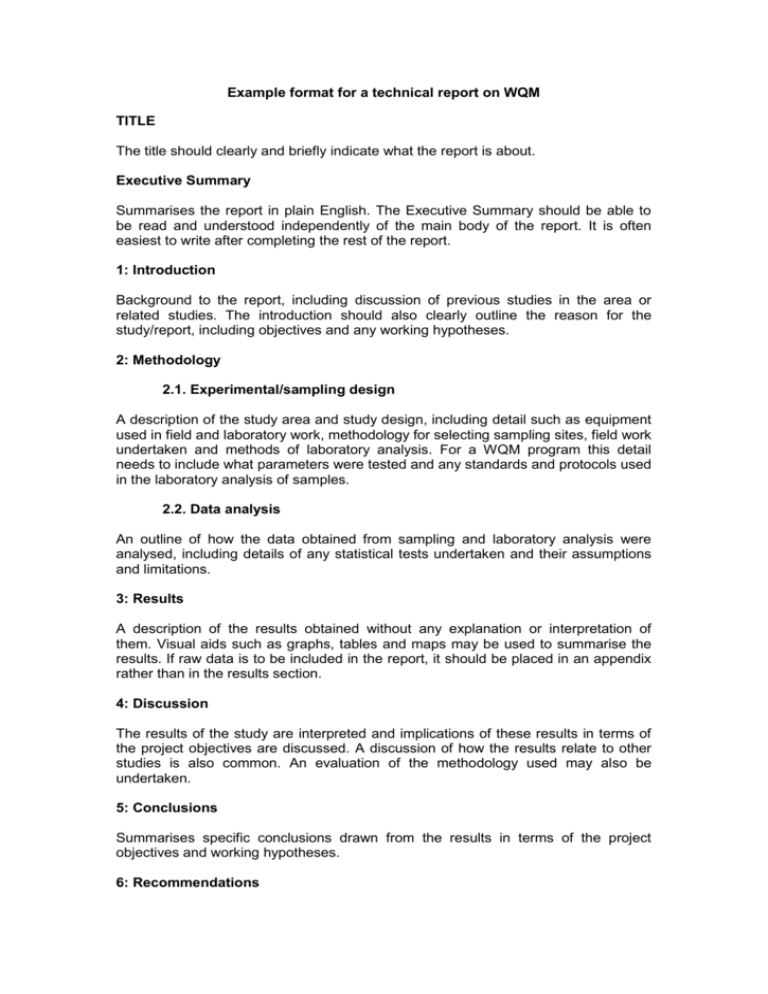
Example format for a technical report on WQM TITLE The title should clearly and briefly indicate what the report is about. Executive Summary Summarises the report in plain English. The Executive Summary should be able to be read and understood independently of the main body of the report. It is often easiest to write after completing the rest of the report. 1: Introduction Background to the report, including discussion of previous studies in the area or related studies. The introduction should also clearly outline the reason for the study/report, including objectives and any working hypotheses. 2: Methodology 2.1. Experimental/sampling design A description of the study area and study design, including detail such as equipment used in field and laboratory work, methodology for selecting sampling sites, field work undertaken and methods of laboratory analysis. For a WQM program this detail needs to include what parameters were tested and any standards and protocols used in the laboratory analysis of samples. 2.2. Data analysis An outline of how the data obtained from sampling and laboratory analysis were analysed, including details of any statistical tests undertaken and their assumptions and limitations. 3: Results A description of the results obtained without any explanation or interpretation of them. Visual aids such as graphs, tables and maps may be used to summarise the results. If raw data is to be included in the report, it should be placed in an appendix rather than in the results section. 4: Discussion The results of the study are interpreted and implications of these results in terms of the project objectives are discussed. A discussion of how the results relate to other studies is also common. An evaluation of the methodology used may also be undertaken. 5: Conclusions Summarises specific conclusions drawn from the results in terms of the project objectives and working hypotheses. 6: Recommendations Recommendations as to future management actions and/or studies are made based on the findings of the study. References Lists the literature cited in the report. Appendices May contain detailed information such as data tables, laboratory reports or photographs. For further information on the format of technical reports refer to: Australian Guidelines for Water Quality Monitoring and Reporting 2000 University of Wollongong: Unilearning
